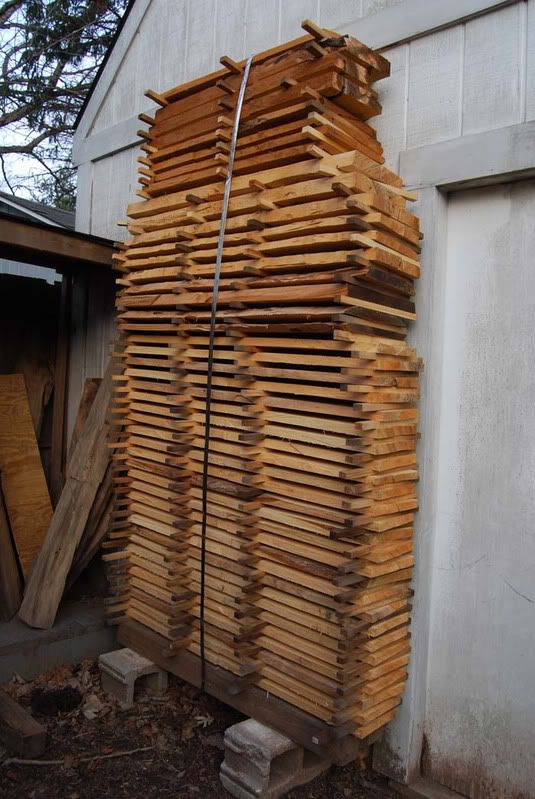Paul Downes
Member
- Messages
- 959
- Location
- Westphalia, Michigan
Less than 5'???
Now Dave, I would hazard to guess that you wouldn't have turned down what I picked up this week. A friend of mine needed help sawing up 20 yards of butts delivered from a local sawmill. He uses the wood to heat his furniture/moulding/rosette factory. I just charged him a wood tax of 3 butt pieces. The curly maple butt was a double trunk tree that was split in 2 pieces. (can you see flame and curl?) We had to load them in my truck with a fork lift truck because there was no way we could lift them by hand. I also found another curly maple butt and a cherry crotch which I cut a 20" square bowl blank from. NOT A ONE over 2 ft. long. Of course I didn't use the chainsaw mill to cut them up, I used the chain saw and band saw.
I almost stole another butt from him even after he split it with a maul. Really nice curly cherry. There was plenty of walnut in the load. I plan on ordering a load myself sometime this summer. I just haven't figured out where to store all the bowl blanks. I built a 4' x 18' loft for bowl blanks in my shop over the lathe and it's already maxed out.
There was plenty of walnut in the load. I plan on ordering a load myself sometime this summer. I just haven't figured out where to store all the bowl blanks. I built a 4' x 18' loft for bowl blanks in my shop over the lathe and it's already maxed out. The other loft in the main barn is close to carrying capacity with walnut, oak, hemlock, elm, cherry and maple lumber.(4'x30') I've got walnut & white oak lumber stacked outside. I guess I better get busy and attempt to depleat the supply side of things. All this from the benefits of useing a mill.
The other loft in the main barn is close to carrying capacity with walnut, oak, hemlock, elm, cherry and maple lumber.(4'x30') I've got walnut & white oak lumber stacked outside. I guess I better get busy and attempt to depleat the supply side of things. All this from the benefits of useing a mill.
Down the road I want to get a Peterson swing mill. Have been also thinking about building a bandsaw mill. I'm retiring from my regular job this spring and looking into another career wasteing time in the wood shop.

Now Dave, I would hazard to guess that you wouldn't have turned down what I picked up this week. A friend of mine needed help sawing up 20 yards of butts delivered from a local sawmill. He uses the wood to heat his furniture/moulding/rosette factory. I just charged him a wood tax of 3 butt pieces. The curly maple butt was a double trunk tree that was split in 2 pieces. (can you see flame and curl?) We had to load them in my truck with a fork lift truck because there was no way we could lift them by hand. I also found another curly maple butt and a cherry crotch which I cut a 20" square bowl blank from. NOT A ONE over 2 ft. long. Of course I didn't use the chainsaw mill to cut them up, I used the chain saw and band saw.
I almost stole another butt from him even after he split it with a maul. Really nice curly cherry.
 The other loft in the main barn is close to carrying capacity with walnut, oak, hemlock, elm, cherry and maple lumber.(4'x30') I've got walnut & white oak lumber stacked outside. I guess I better get busy and attempt to depleat the supply side of things. All this from the benefits of useing a mill.
The other loft in the main barn is close to carrying capacity with walnut, oak, hemlock, elm, cherry and maple lumber.(4'x30') I've got walnut & white oak lumber stacked outside. I guess I better get busy and attempt to depleat the supply side of things. All this from the benefits of useing a mill. Down the road I want to get a Peterson swing mill. Have been also thinking about building a bandsaw mill. I'm retiring from my regular job this spring and looking into another career wasteing time in the wood shop.

